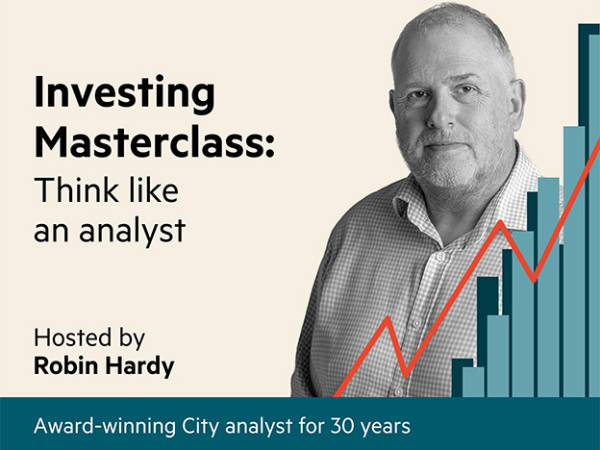Warren Buffet often cites two books as the foundation of his investing philosophy. "I've seen nothing to improve on Graham and Fisher," he once said, referring to Benjamin Graham's classic The Intelligent Investor and Philip Fisher's Common Stocks and Uncommon Profits. Indeed, Buffett claims to be 85 per cent Graham and 15 per cent Fisher.
And it's heartening that an investor as successful as Buffett used widely available books to create such a vast fortune. So, below, we've picked our top 10 investing and trading books of all time. You may argue that other titles deserve a mention, but our list has been specifically designed so that any investor only need buy these titles to develop a successful strategy for investing, active investing or trading.
INVESTORS
1. The Intelligent Investor – Benjamin Graham
Benjamin Graham's book is the bible for value investors - as we've mentioned, Warren Buffett cites the title and its author as the foundation for his investment style. It's a book with classic insights that can benefit any investor - although it's by no means a riveting read.So what are these classic insights? First, to value and buy stocks as you would a private business. But, as Graham outlined, you have a partner, 'Mr Market', who makes an offer every day for your share of that business. Mr Market oscillates between optimism and fear, so his daily offer fluctuates widely, providing savvy investors with opportunities."Basically, price fluctuations have only one significant meaning for the true investor," Graham said. "They provide him with an opportunity to buy wisely when prices fall sharply and to sell wisely when they advance a great deal. At other times, he will do better if he forgets about the stock market and pays attention to his dividend returns and to the operating results of his companies.
"The second insight is the notion of a 'margin of safety'. Graham argued that investors should buy companies that are so solid and cheap that there is a significantly reduced risk of losing money. For example, he advocated buying stocks in companies that have not made a loss for the past 10 years, and that trade at no more than 1.5 times net asset value and at less than 15 times average earnings per share (EPS) for the past three years.Graham focused solely on value and didn't care whether companies had good businesses or not. So to flesh out his philosophy, Buffett had to turn to another author, Philip Fisher (see below). Nevertheless, Graham's notion of a margin of safety and the concept of Mr Market has spawned a generation of investors unprecedented in their ability to make money.
2. Common Stocks and Uncommon Profits – by Philip Fisher
Philip Fisher has a buy-and-hold philosophy, but he advocates buying growth stocks. That is, companies that have the type of products and managers that will generate long-term increases in sales and earnings. For example, his 'Fifteen points to look for in a common stock' include questions such as: Does management have a determination to continually innovate through new products? Does it have a short-range or long-range outlook in regard to profits? Does the company have a management of unquestionable integrity?
These factors are hard to measure, but can be as important as a company's financials. Indeed, Warren Buffett's success has, in part, come from a synthesis of Fisher's qualitative approach with the rigid quantitative methods of Graham. That's why you'll hear the Sage of Omaha placing so much emphasis on having honest, focused executives running the companies he invests in.
Fisher's other insights were also at odds with the value investing school. He played down the importance of dividends and believed that high price-earnings (PE) ratios shouldn't necessarily rule a stock out of consideration. He also eschewed diversification, believing investors should focus on a small number of stocks that they know a lot about, and advocated buying good companies when the markets drop as a result of fears of war.
He brought a personal approach to finding great growth stocks, too. First, he limited what he bought to areas he knew a lot about. He also made famous the 'scuttlebutt' technique of getting the low-down on a company by talking to suppliers, customers, competitors and employees. Aside from Buffett, Fisher's son Kenneth has also successfully implemented elements of the books, including scuttlebutt, and become a billionaire through managing money.
3. One Up on Wall Street – Peter Lynch
This book is a revelation for mum and dad investors. It's easy to be intimidated by investing and to assume that the professionals know all the tricks of the trade. But Lynch - himself one of the best-performing mutual fund managers of all time - believes the average investor does, in fact, have an advantage. Where is it? All around us! As highlighted in the feature '10 shares that will deliver' (IC, 25 November 2005), Lynch argues that each person has an "edge". That is: we understand some markets and companies better than other investors, analysts and traders. For example, a doctor knows the medical market, ie which drugs are hot and which are not, and a parent knows what toys their kids are demanding and what products their teenage children want for Christmas.
One of Lynch's favourite places to hunt for stocks is in the shopping mall, where he found big winners such as Gap. The concept is similar to Warren Buffett's notion of a "circle of competence" - investors should stick to investing in what they know.
Lynch outlines different types of stocks, including cyclicals, turnarounds and fast growers. And, even though he actually made more money from turnarounds such as Chrysler, for the average investor, he recommends chasing fast growers, which is where the biggest gains can be made. That involves buying into companies, usually in average industries, that are growing more than 15 per cent due to expansion or competitive advantages. To find them, just look around you. Caffé Nero has been a huge winner, and Virgin Mobile is another great company that no mobile phone user could miss.
Lynch also takes an optimistic view of the market: to succeed, you should be prepared to stick out inevitable bear markets and hold on to companies as long as they remain good. So this book is a classic because it reinforces concepts that no one should ever forget: great companies make great stocks; investing is fun and makes the whole world an interesting place; and, most importantly, anyone can succeed with hard work and patience.
ACTIVE INVESTORS
4. How I Made $2,000,000 in the Stock Market – Nicolas Darvas
This is probably not the best book to read on the train as you risk fellow passengers thinking you're a self-help manual addict. But behind the title is a fascinating tale of how one man made a fortune with a simple trading system. And traders and investors who have been in the trenches are sure to value this authentic book written by someone who has been there themselves, rather than merely theorising or coaching. Darvas takes you with him on his journey through initial frustration to triumph.
The main lesson of the book is to develop a system that suits you and stick with it. Darvas' method involved buying stocks that were breaking out of 'boxes' to new highs, with a trailing stop-loss moved up to lock in profits each time the stock formed a higher box. He would also buy stocks in active leading companies with revolutionary new products. Most importantly, he timed the market - his method only worked well during bull runs.
Of course, all traders who have developed their own system know that sticking to it can be the hardest part. So the most interesting section of this book is the one that describes how Darvas reaped some huge profits and was then overcome by hubris. His successful system involved checking quotes from newspapers and cables as he danced around the world. However, he then decided to become a big hitter and trade on an active basis from a broker's office.It was disastrous. He listened to tips, became dazed and disoriented and began losing money. He finally realised that his system worked best when he was far away from Wall Street. In a world flooded with data, research reports, tips and recommendations, Darvas proved that success can come from simplicity and through blocking out noise.
5. Reminiscences of a Stock Operator - Edwin Lefevre
Despite being penned in the early part of last century by finance journalist Edwin Lefevre, this book remains a must-read for traders and active investors. It's a thinly disguised biography of legendary trader Jesse Livermore (Larry Livingston in the book) and its trading aphorisms have become legendary. The book starts with his introduction to trading in the infamous 'bucketshops' of the United States, where speculators could put up a 10 per cent margin for a punt on price movements linked to stock exchanges.
Livingston battles with the dodgy bucketshop operators who end up banning the boy wonder because he's so successful. And one of the book's major themes is how things in the market never change. Just substitute bucketshop owners for online contracts for difference (CFD) and spread-betting platforms where the public are lured by small margins and the prospects of major killings.
Livingston breaks free of the bucketshops, but finds the going tough on the main market in New York, where the rules of the game are different. But after going broke several times and coming back, his long line of errors gives him a workable system. One of the book's gems is from a man known as 'Turkey' by fellow traders in the broker's office. His only tip to his colleagues was: "It's a bull market you know." What he meant was that the large gains in the market were following the trend - being long in bull markets or short in bear markets and holding those positions, rather than trading in and out or seeking stocks at cheaper prices on pullbacks. "It never was my thinking that made the big money for me. It always was my sitting. Got that? My sitting tight!" he said. You could read this book 100 times, and still find new insights and angles to help improve investment results.
6. How to Make Money in Stocks - William O'Neil
Perhaps the best review an investing book could have is that it helped the reader make money. Such is the case with William O'Neil's classic, which has inspired a generation of investors to combine growth company fundamentals with technical analysis. Read internet chat room reviews and the tales of well-known traders, and "this book helped me make money", is a common refrain.The book explains O'Neil's CAN-SLIM method, which has been popularised by his daily financial newspaper, Investors Business Daily. One of the most important aspects of CAN-SLIM is the 'M', which stands for market direction. Growth investing is often dismissed on the assumption that it works in bull markets, but is disastrous during downturns. So O'Neil advocates sitting bear markets out. Yes, that's market timing, but it has worked for thousands of his disciples.
While mainstream investment teaching and methods revolve around value investing, O'Neil advocates buying great companies with accelerating sales and earnings, whose share prices are breaking out of trading ranges to new highs. That puts him in the same school as Jesse Livermore and Nicholas Darvas. His book also outlines the basics of active investing, including cutting losses short.
Unfortunately, like many other classic books, it is no masterpiece of literature and will require several readings for maximum effect. That said, it's great for both new investors and experienced ones. So, if you're inclined towards investing in growth stocks, have an optimistic outlook and believe in technical analysis, this book could make you money.
TRADERS
7. Trading in the Zone - Mark Douglas
Novice traders tend to take similar steps in their path to success. The first step is fundamental analysis, because that's where everyone starts. Then technical analysis completes the picture, providing a pulse on market supply and demand. But once this analysis is mastered, frustration often sets in - despite all this knowledge, consistent results remain out of reach. That's when savvy investors realise that psychology is a key component to trading success. And that's where Mark Douglas' book comes in. Indeed, it is probably the only book you'll need to read on trading psychology.
The book outlines basic beliefs about human nature, particularly how we're set on avoiding pain. Losing trades are painful experiences, but we need to accept that losing is part of trading. The best traders, such as Steve Cohen, lose 40 per cent or more of the time. But they keep plugging away.
Douglas highlights a mindset to take to the market to achieve this. It involves thinking in terms of probabilities and accepting that anything can happen in the market. A successful trader with an edge is like a confident casino gambler. While accepting anything can happen on each trade, with wins and losses randomly distributed, he's still confident that if he implements his edge with discipline, over time it will pay off. So this book aims to help traders clearly define their edge. It also improves risk management. After all, if we accept that anything can happen in the market, why on earth would we put on huge 'conviction' trades that can wipe us out?
8. Technical Analysis of Stock Trends - Robert Edwards and John Magee
A minor confession: this is the only book I haven't read thoroughly, though on occasions, I have used it as reference. But it is clearly recognised as the bible of technical analysis and other traders swear by it, so it warrants entry. It was originally written in the 1940s, and reads like a text book. So some readers have complained about the lack of modern indicators, although these are included in the appendix in later editions.
And to my mind, the emphasis on historic charts and age-old patterns is a good thing. It helps traders realise that the most effective methods are often the basic ones that have kept working for years and will continue to do so. That said, beginners may prefer to begin with William Jiler's How Charts Can Help You in the Stock Market, which is also a recognised classic. Everything about charting, including trends and support and resistance, can be found in Jiler's book. For continual reference, though, Edwards and Magee's book is hard to beat.
9. Market Wizards: Interviews with Top Traders - Jack Schwager
This is the original in a series of three, which includes The New Market Wizards and Stock Market Wizards by futures analyst and trader Jack Schwager. Almost every trader worth their salt has a well-thumbed copy on their desk - or even next to their bed. The book is a series of question-and-answer interviews with top US traders, including such legends as Ed Seykota, William O'Neil, Michael Steinhardt and Bruce Kovner. And some of these, including the Kovner interview, are virtually the only public statements on trading these luminaries have ever made on record.
Like other books in this list, Market Wizards should be reread to get the most out of it. When you do this, the basics of success shine through - despite the vast range of strategies outlined, from Seykota's trend following to O'Neil's CAN-SLIM. The Wizards all have a trading methodology or edge that suits their personality. They control risk by cutting losses and managing position sizes, and they have the discipline to stick to their method. But above all they're obsessed with the market and view it as a game to master.
10. Trade Your Way to Financial Freedom - Van Tharp
Thousands of books deal with when to buy shares. But anyone who's traded knows that entering positions is only part of the equation. Apart from psychology, the other element is risk management: how much should you risk on each trade? And how much of your portfolio should be at risk? Even with a great trading system, if you risk 50 per cent of your portfolio on each trade, it won't take many losses before you're wiped out.
Van Tharp's book goes a long way to giving traders a framework for managing this risk. It provides a step-by-step program for developing a system from setting up a trade through to position sizing. Most people would be shocked to learn that most professional traders risk just 1 per cent of their portfolio. That's not how much of their portfolio is in each position, but how much they would lose if they entered a trade and their stop-loss was hit.
When approaching risk management, the book's most important message is to design a system with positive expectancy. That is:
(the average size of wins x the probability of wins) - (the average size of losses x the probability of losses) = a positive number.
A multitude of combinations can generate that positive number. Tharp's message is that it's up to you to develop your system.The book is an invaluable source in adding risk management to trading systems and psychology.






